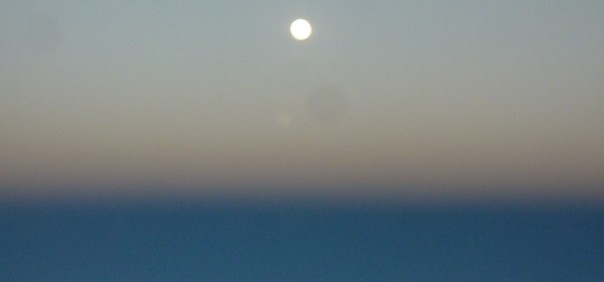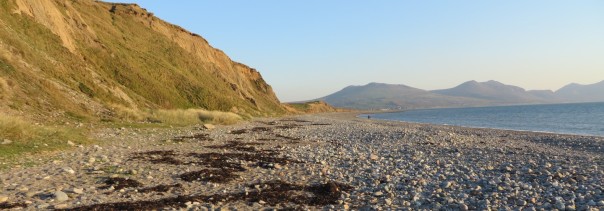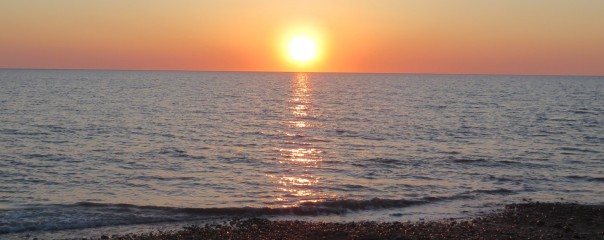It was through two wonderfully knowledgeable women, in the dark folds of the Red Tent, that the gift of the mystical story of our local and incredibly powerful Celtic Moon Mother Goddess Arianrhod was unfolded to me for the first time.
The name Arianrhod (ah-ree-AHN-rhohd), is from arian, meaning ‘silver’ and rhod meaning ‘wheel’ or ‘disc’. She is the Welsh moon and star Goddess. The ‘Silver wheel that descends into the sea’ may represent the moon or circumpolar stars, to which souls withdraw between incarnations. She is often identified as the Goddess of reincarnation. The silver wheel is also likened to ‘a cylinder through which deities, gods goddesses and ancestors become accessible; like a silver bridge into the void’.
She is the Daughter of the Mother Goddess Don. She is also ruler of Caer Sidi, a magical realm in the North. She was worshiped as priestess of the moon (the archetypical female symbol) coming down in her pale chariot to watch over her tides. Representing the Mother aspect of the Triple Goddess in Wales, her palace was Caer Arianrhod, or the secret center of one’s spiritual being, where at low tides, horses ‘dart and play on the surf’.
She also carried the dead on her Oar Wheel to Emania, the Moon-land or land of death; she represented the archetypal cycle of womb, death, rebirth, and creation. Ancient astrologers took their observations from the position of the moon and its progress in relation to the stars – the starry wheel of Arianrhod. Albion, the old name of Britain, meant ‘White Moon’. The Celts “know well the way of seas and stars”, and counted time not by days, but by nights, and made their calendars, not by the sun, but by the moon.
Arianrhod is said to be able to shape-shift into a large Owl, and through the great Owl-eyes, sees even into the darkness of the human subconscious and soul. The Owl symbolises death and renewal, wisdom, moon magic, and initiations. She is said to move with strength and purpose through the night, her wings of comfort and healing spread to give solace to those who seek her.
Her Festival is on 2nd December, and she is also honoured at the Full Moon.
One of many stories of Arianrhod forms part of the Mabinogion, a collection of 11 ancient pre-Christian Welsh myths, some dating as far back as the Iron Age.
This story tells of Goddess Arianrhod, daughter of a Goddess, and niece to the Math the King of Gwynedd.
King Math, was compelled by a taboo to keep his feet in the lap of a virgin whenever he was not actively engaged in battle. After his first ‘footholder’, Goewin, was seduced by Arianrhod’s brother, Math asked Arianrhod to take her place. She is forced to step over a magician’s rod to prove her virginity. As she does so, she immediately gives birth to two sons; one called Dylan, the other who is eventually named Lleu who is taken away to live with Arianrhod’s brother and raised in a magic forest.
Arianrhod is enraged at the humiliating virginity test she endured at the court of her Uncle, and directs the anger she has for the Masculine towards her one remaining son.
She places three curses over Lleu during his life: He shall have no name except one she gives him. He shall bear no arms except ones she gives him. He shall have no wife of the race that is now on the earth. These deny him the three ancient aspects of masculinity.
Her brother cleverly manages to trick her each time, dispelling all of her curses, and eventually creating Lleu a bride, Blodeuwedd, out of Oak blossom, broom and meadowsweet. Arianrhod retreated to her castle Caer Arianrhod. Here she later drowned when the sea reclaimed the land.
The sunken ruins of the island on which she dwelled, Caer Arianrhod is to be found off the coast near to the pre-historic mound of Dinas Dinelle, in North Wales. On a low spring tide this ancient relic can sometimes be viewed from the shore. I can see this exact spot of coastline from my bedroom window, and now the incredible view has taken on a new meaning as I inwardly reflect on, and celebrate the Goddess of the Silver Wheel.
Once, Caer Arianrhod would have been on dry land and forested, according to ancient sea level studies. There is lots archaeological evidence to suggest that humans occupied the area from as early as the Neolithic period, though to take a boat to the island it would have been more likely to be Bronze age times, when the sea levels rose slightly. There are recorded stories about women living on Anglesey who, upon looking into the waters saw a town that had been flooded by sea, and who’s walls could still be seen at low water. One local blogger reported sightings of the Island in April of this year.
Hymn to Arianrhod
Arianrhod of the Silver Wheel
By all the names men give thee –
We, thy hidden children, humbly kneel
Thy truth to hear, thy countenance to see.
Here in the circle cast upon the Earth
Yet open to the stars – unseen, yet real –
Within our hearts give understanding birth,
Our wounds of loss and loneliness to heal.
Isis unveiled and Isis veiled, thou art;
The Earth below our feet, the Moon on high.
In thee these two shall never be apart –
The magick of the Earth and Sky.
Thanks very much to all the incredible web sites there are out there which gave me inspiration and information, especially the white goddess who wrote the prayer and passages about the Owl and Celtic astrologers.
For more information about size and shape of reef click here.






Reblogged this on Riding effortlessly on a large green turtle and commented:
The citadel of Arianrhod, built out at sea, sat directly opposite our house near Caernarfon, North Wales. We have just discovered this. She also has a citadel in the stars, Corona Borealis. These Welsh valleys and hills are alive with folklore!
I loved your prayer to Arianrhod. I have been meditating on the concept of caer Sidi and while I was looking for possible images of it I came across your website. Please add stuff to it, there is not enough of the ancient myths of our home on the web.
Blessings
Maureen
Maureen,
Please accept my apologies that it took so long for me to reply. We have been travelling to India and I didn’t take a computer!
Thanks for your kind words of encouragement – I hope to be adding to this blog soon and I hope that it does fill out and become rich with all kinds of things, myths, local legends and folklore over the coming years.
With love,
Jane Xx
Why is Isis mentioned in the poem when she is Egyptian and has nothing at all whatsoever to do with the Welsh pantheon?
Thank you for your comment. My interpretation of this poem is that the author chose to pay tribute to Arianrhod by comparing her with Isis, or the divine feminine. In the line “By all the names men give thee” I believe the poet wants to show the universality of the divine feminine energy, no matter what name is given to it. Thank you for reading, Jane Xx
There is evidence to suggest that Isis was worshipped in England during the Roman occupation; maybe that was also true in wales?
Yes probably, and to reinforce what you are saying, I’m certain I have seen a Roman Isis statue at the museum of Antalya, Turkey. And an Isis temple at one of the many ruins there. I wonder if she ended up in Wales!
She was somewhat of a Universal Goddess among the matrons of Rome and when they followed their husbands on the campaign trail, they brought Her with them.
Up here in Northumberland the Romans had a huge Mithraic tradition which shared its sacred site at carrawborough on Hadrian’s Wall with a temple and holy spring to Coventina (known as Tinia to the native Britons). In the ruins of the Mithreum they found a statue of the Mother Goddess at the entrance with arms held out before Her to accept offerings from the celebrants. It is still a very special place. Other artifacts include altars and plaques to the Matronas (the three Mothers) which may be a triple Goddess form of Coventina, although the Maiden, Mother and Krone form is not discernable as they are cloaked and hooded.
Thanks so much for all this fascinating information, for sharing your knowledge, and a peep into such interesting history of northumbria, this has really sparked my imagination! Do you have a blog where you write more of this kind of thing? I’d be interested in reading it and I’m sure other readers would too.
We used to have a magazine which migrated to on-line but is now defunct. We do have a correspondence course in British paganism which is aimed more at people starting out but would be happy to share some of the info/rituals from that if you are interested. I also have three e-books available from Amazon under the pen name of Lucy Crawford. One is a novel about Bronze Age Britain at the time of the first Celtic invasions (Albion’s King), one is a book on the history and practice of Paganism and is based on our correspondence course (Pagan!) and the third is a small missive on spiritual self-development (Dancing with the Moon).
I don’t do blogs but am happy to share my knowledge with anyone about anything!
Thank you so much. How absolutely amazing. I have just found you on amazon and your books look wonderful. I would like to invite any of the readers to contact you also if there is anything they are interested in, and thank you deeply. I see that you are working on a book about Northumberland too, is it a fictional story? Wishing you all the best in your project. I may just take up your kind offer to learn more about rituals one day, as I am open and interested!
Blessings to you all at Imbolc. The White Lady is certainly making Her presence felt this year!
The faerie Child is a fictional book about a family where every third generation a girl is born who can communicate with the faerie world. At the same time her counterpart ‘the Hoodie Man’ arrives to try and stop her. The novel is progressing rather slowly at the moment as I am working two jobs and also have family commitments; but one day I will finish it.
The correspondence course is completely free but I can only take a couple of students at any one time. If folk want the info without the tutoring then they can get much of it from my book Pagan! Many find this the easiest route in busy modern life, but for the few who want more individual interaction and can commit to doing the exercises, I am willing to help.
Blessings
Maureen
Thank you so much Maureen. Wishing you much success and energy for your incredible sounding book, as you juggle all those other commitments. Bright blessings to you. It is wonderful to know that ‘Pagan’ is out there. Your willingness to work with people helping them on their path is deeply touching. Blessings of Imbolc, of light and peace, Jane
It’s great to find other Arianrhod worshippers! I’ve felt so very alone. I was unaware of a land feature, although I’d searched long and hard for one. It’s nice to finally find someone who can tell me more.
Dear Arlene, thanks for leaving a comment – have you read the conversation above I had with a lady called Maureen? She is an expert on historical/Pagan/Goddess topics and has written some books about it on Amazon. She would be able to tell you even more than I have – it just occurred to me to connect you. Happy wishes and blessings from deep mid-winter, Jane Xx